

Tora Endestad Bjørkheim and Johnny Herbert
courtesy of Pearla Pigao
Pearla Pigao weaves large-scale tapestries that double as musical instruments. By using metal threads as warp and weft in the loom, the tapestries can played by audiences moving between and around the textiles, altering the electromagnetic field between their body and the textile surface.
From a very young age and up to her late twenties, Pearla Pigao devoted most of her time to sound and music. She never felt entirely comfortable with performing, however, and she also had a need to express herself visually, so she began exploring visual phenomena through music.
'I investigated sound through various materials and forms such as performance, video, sculpture, and installation. It was never my plan to bring music and sound into the visual sphere, but it just felt natural with everything I did.'
When commencing her studies in the textile department at the Oslo National Academy of the Arts (Kunsthøgskolen i Oslo, Khio) in 2012, she was introduced to the digital loom. Unlike the analogue loom, it has the potential to weave more complicated designs by controlling each individual warp thread. She discovered similarities between the loom and music:
'Learning more about the loom and the weaving process, I discovered similarities between building a pattern digitally for weaving and digitally building a musical composition.'
The work of Beryl Korot, a ground-breaking figure in the video art scene since the 1970s, was formative in this period:
'Her work Text and Commentary from 1974, in which she explores the structural relationship between the loom and computer programming, was a work I spent a lot of time on to fully comprehend, and it probably inspired me more than I realised back then. In this work, she presents an expanded way of looking at what the linear structure of weaving, video and text have in common, and how they can be built to create information that can in turn form a narrative, based on weaving structures. Like Korot, I try to investigate several aspects through the weaving process and the loom itself, such as the sound of the loom, the programming of patterns and the spatial, physical, and tactile aspects of textiles.'
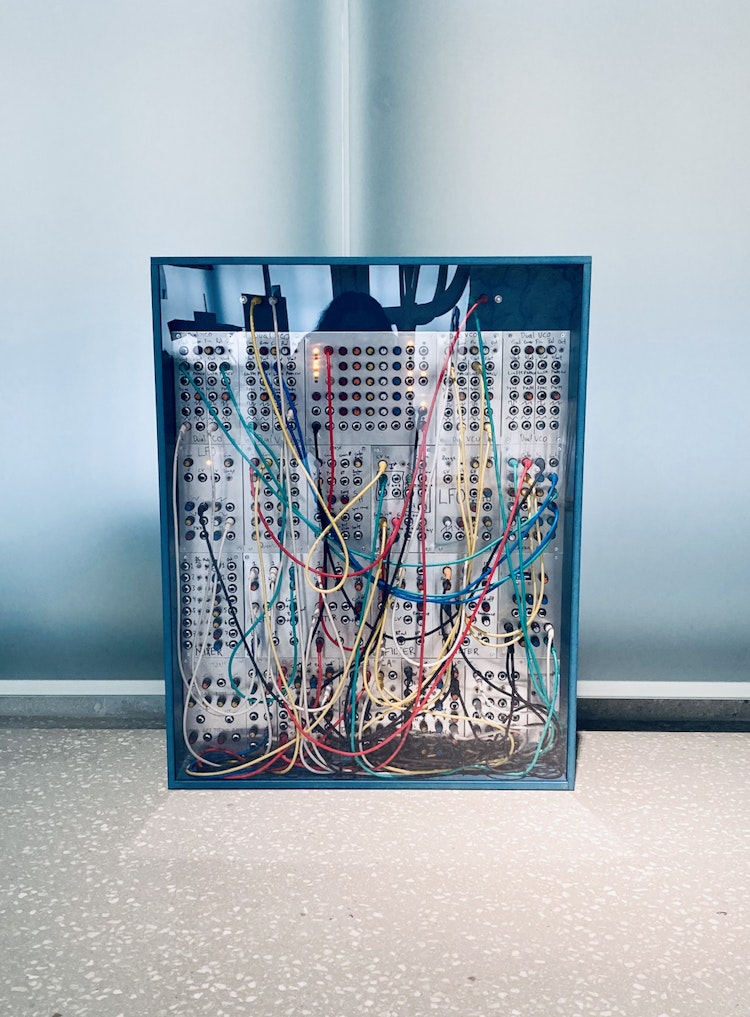
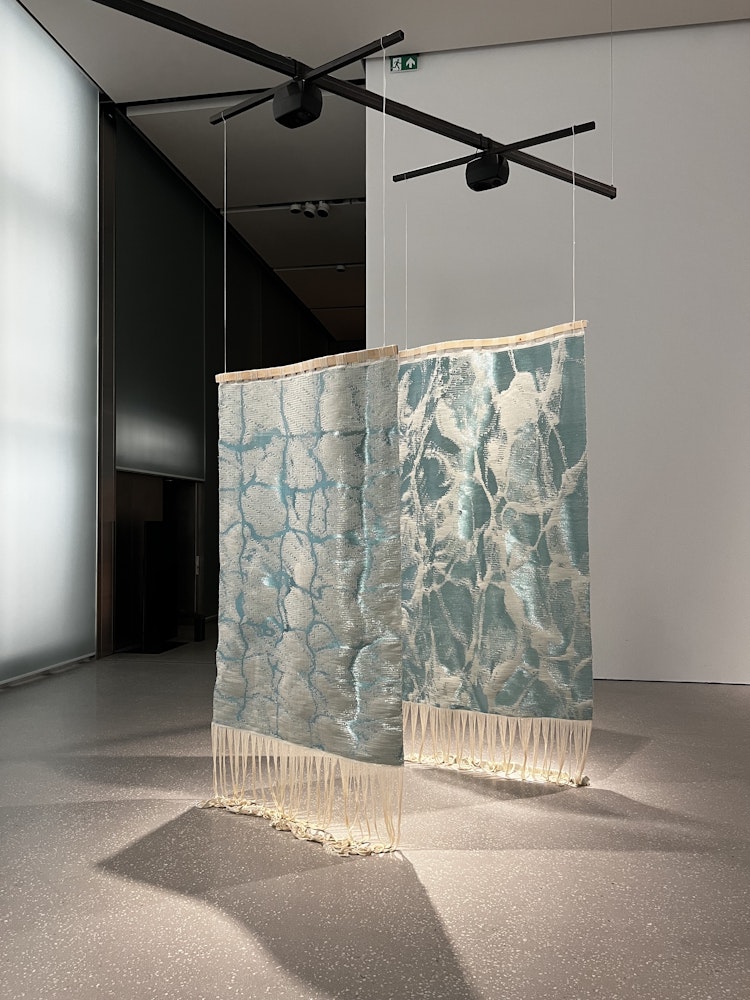
I am able to compose music that can be used to build visually interesting textiles. At the same time, I allow the visual aspects to inspire how I compose music.
Pigao uses a binary numeral system—the basis of digital signalling—when translating sound into weaving: under the thread and over the thread correspond to zeroes and ones.
'Because both the music and the image files are built from zeroes and ones, I am able to make the computer open musical structures and my own musical compositions as image files. This way, I can translate the music into visual images. I call these patterned images that occur ‘sound pictures’. The sound pictures are what link the actual sound with the loom, and they are the foundation for the woven textiles. I usually say that they are like a combination of sheet music and weaving sketches; it’s a process I have developed over several years. Based on these discoveries, I have created a space to experiment with sound, patterns, bindings, and different materials.'
After experimenting with translating found material, such as images of white noise and converted images of her own composed music into patterns for weaving—or sound pictures as Pigao likes to call them—she decided to work more systematically with the sound in an effort to understand its connections to images. She started recording different instruments and compared the varying sonic qualities produced by the sound pictures.
'I could see how the tones and frequencies of the different instruments affected the pattern. It would change depending on whether the tone was high- or low-pitched, round or thin, noisy or clean. For example, I learned that high-pitched tones form a sound picture that is evenly dense and delicate, while low-pitched tones produce a richer, more specific pattern. By way of these discoveries, I am able to compose music that can be used to build visually interesting textiles. At the same time, I allow the visual aspects to inspire how I compose music.'

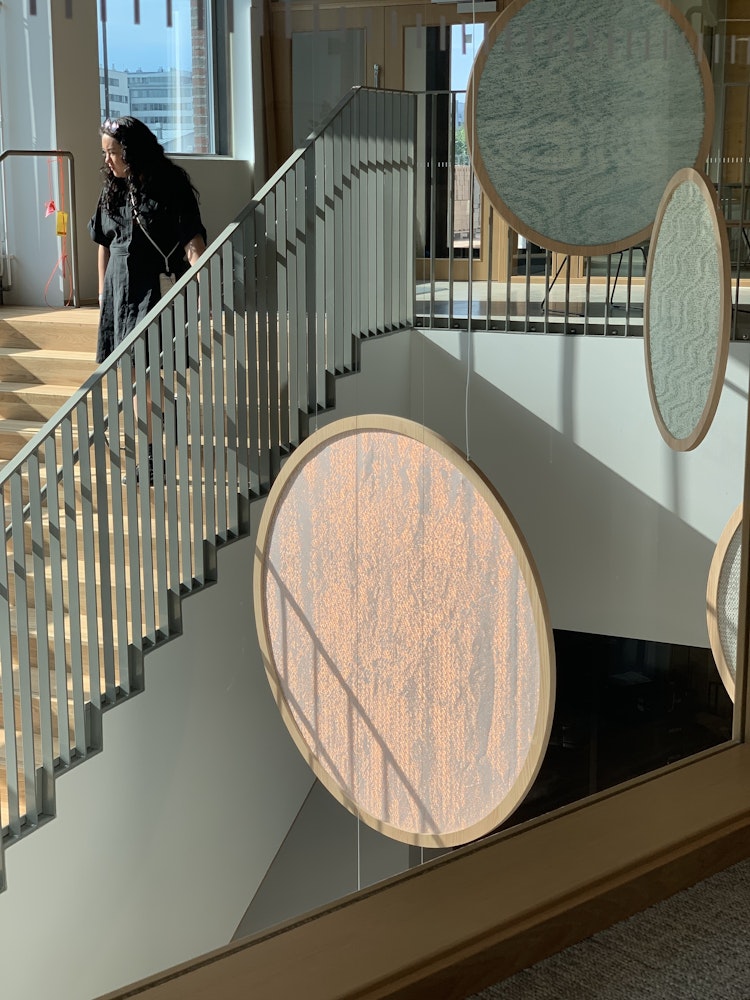
At first, Pigao used metal thread in her weaving for aesthetic and sculptural reasons, but she soon became interested in how a fabric woven with metal thread has other properties as well.
'The way the fabric is naturally formed by touch and changes in temperature reminded me of visual representations of sound waves. I was also interested in how the textile changes its appearance from matte to glossy, or from light pink to deep orange, depending on how the light hit its surface. Eventually, I began to think about what other properties metal has—for example, its ability to conduct electricity.'
In the spring of 2017, she graduated with a master’s degree in medium- and material-based art from Oslo National Academy of the Arts. Her graduation work, Sinus, an interactive textile instrument inspired by the electronic musical instrument called a theremin, was the result of a long research process and collaborative effort with electronics developer Henrik Waarum. However, the symbiotic relationship between image and sound in Pigao’s work is not solely limited to her use of the binary numeral system in the production process, for there is also a symbiotic relation in the experience of the work: between listening, playing and looking. Interactivity is an integral part of the work, and the viewer becomes a crucial element of the sound-producing circuit.
'Through using metal threads as warp and weft in the loom, I transform woven surfaces into instruments. These instruments are played by a viewer's body as it moves between and around the textiles, altering the electromagnetic field between the body and the textile surface. Since the sound changes according to the audience's movement and proximity to the textile, the work becomes interactive and the audience becomes a co-creator of the work’s sound composition: the woven textiles get an expanded sound-based ‘body’, and the viewer is simultaneously the listener and the composer.'
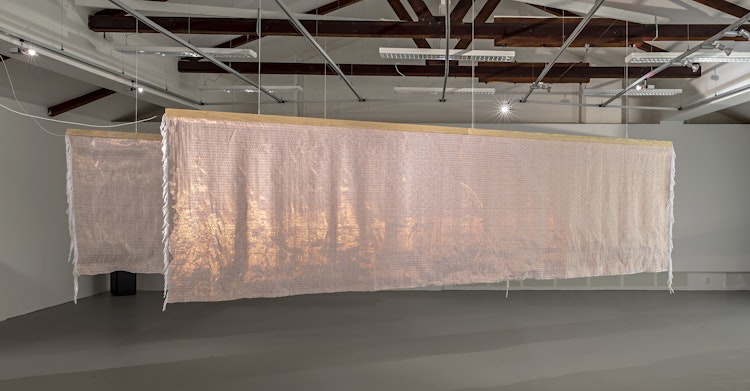
It was for her work Sinus that Pigao, in 2017, won the Student Prize from the Norwegian Association for Arts and Crafts and the Art and Craft Prize from the Foundation for Art and Design Students. Moreover, this spring she is one of the chosen craft artists to be included in Norwegian Presence during Milan Design Week 2018.1
'For me, ideas are formed from the knowledge I have about a material. Mastering a particular craft enables access to unique knowledge and experiences. It is important for me to use this knowledge to make crafts compelling. I hope to expand the understanding of what crafts can be and, as such, challenge the viewer.'
Despite her work being based in weaving, Pigao’s practice is multi-faceted, in that she experiences the loom as merging sound and image in more than one way:
'I have a somewhat ambivalent relationship to weaving. The loom is a complicated tool that requires much preparation, attention and special knowledge. Weaving also requires endurance, patience, and, with the digital loom, a high tolerance for sound or noise. On the other hand, the physical, meditative and repetitive action in weaving creates rhythmic structures, and, as such, I also experience the loom as a rhythmic instrument. The state I experience when weaving also occurs when I make music.'
The same goes for the materials she uses:
'Finding materials that I feel resonate with the sound is important to me. I find it exciting to play with multi-functional materials. Metal thread, for instance, has textural, sculptural, and audible qualities. It is also difficult to weave with, often breaking and bending, making small tears in the fabric. However, there is something in that resistance that is interesting for me to explore: the relationship between the presence of the human hand in crafts and digital methods of production.'
With all these concerns, Pigao is careful to emphasise that the three elements of sound, visual material and movement are totally dependent on each other and play equally important roles:
'What often happens when working with visual media along with audio is that the sound is degraded to a kind of reinforcement of the visual media. However, sound can set a particular mood and generate new images in the listener's mind. It also has a very particular effect on the body due to its vibrational properties. I believe that if one has an awareness of the sound one hears and can connect with it, it will engage one’s intellect, feelings, and memory. Due to the size and three-dimensional nature of my works, an audience must move and vary their distance and perspective in order to visually experience the textiles. It is these movements that generate sound. If you just want to play, you still need to relate to the textile surface, and your pattern of movement will determine how you see the fabric.'
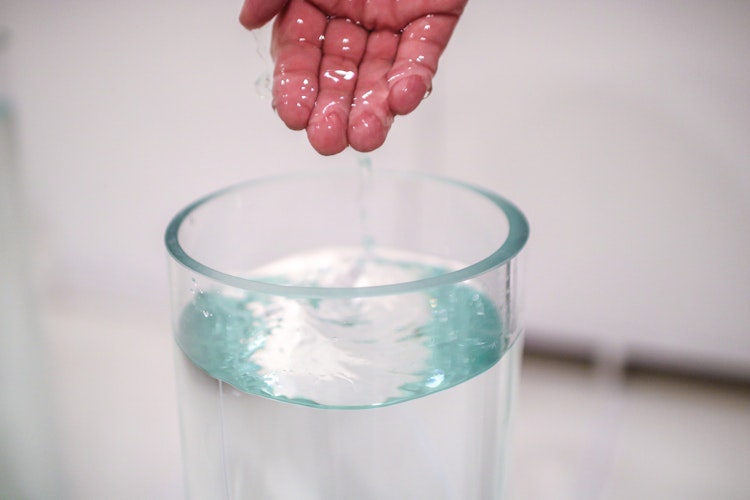
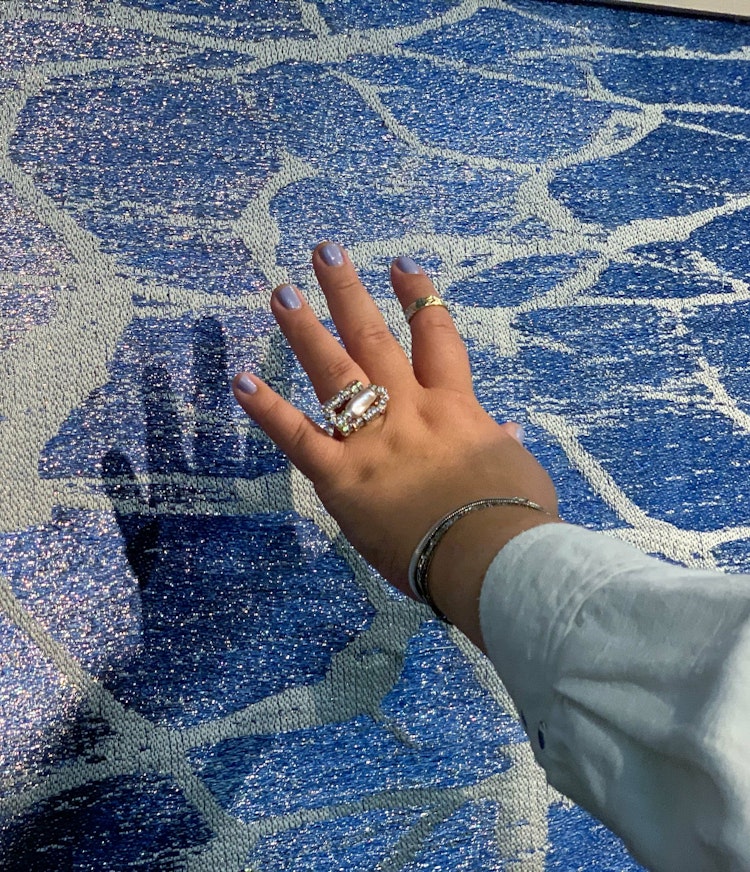
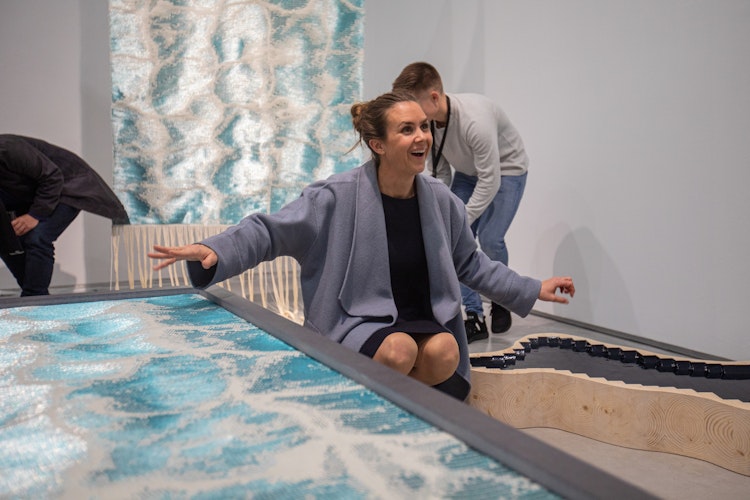
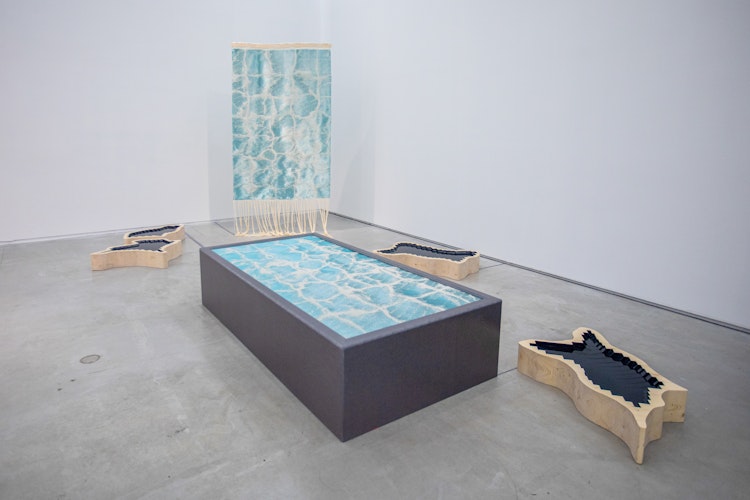


Pigao has already had several exhibitions nationally and internationally, but at the end of the day, she is most concerned with how an audience approaches and interacts with her works and the experiences that can arise:
'I remember the first time I watched an audience interact with one of my works. I was very surprised and fascinated by how unrestricted people were when encountering the installation. Many people explored distances and movements in relation to the sound, taking the time to get a bodily understanding of the work, whilst others were more interested in the craft. For some, the sound was the focus of their attention, and they danced or came with instruments to play along with the textiles. The audience generally interacted much more than I expected and could hope for.'
Pigao is already planning new exploratory projects:
'For some time I have wanted to do a ‘translation’ of my textile works so that they can also be shown outdoors in social spaces. I am working with Henrik Waarum on an outdoor interactive audio sculpture to be presented in September 2018 during Sørlandsutstillingen at Ibsenhuset in Skien. The sculpture will be in dialogue with one of my textile installations that will be shown inside the gallery room. I am really excited and a little nervous to work in a material different to what I am used to, but my hope is that it will provide challenges and processes that will eventually lead to new works and working methods. I will also show brand new textile/synthesiser-based works in a solo exhibition in Kristiansand in October. I think viewers will play a similar role as in my previous works, but technically, this new work will be more complex than anything I have done to-date.'